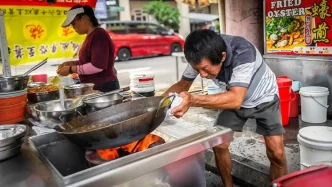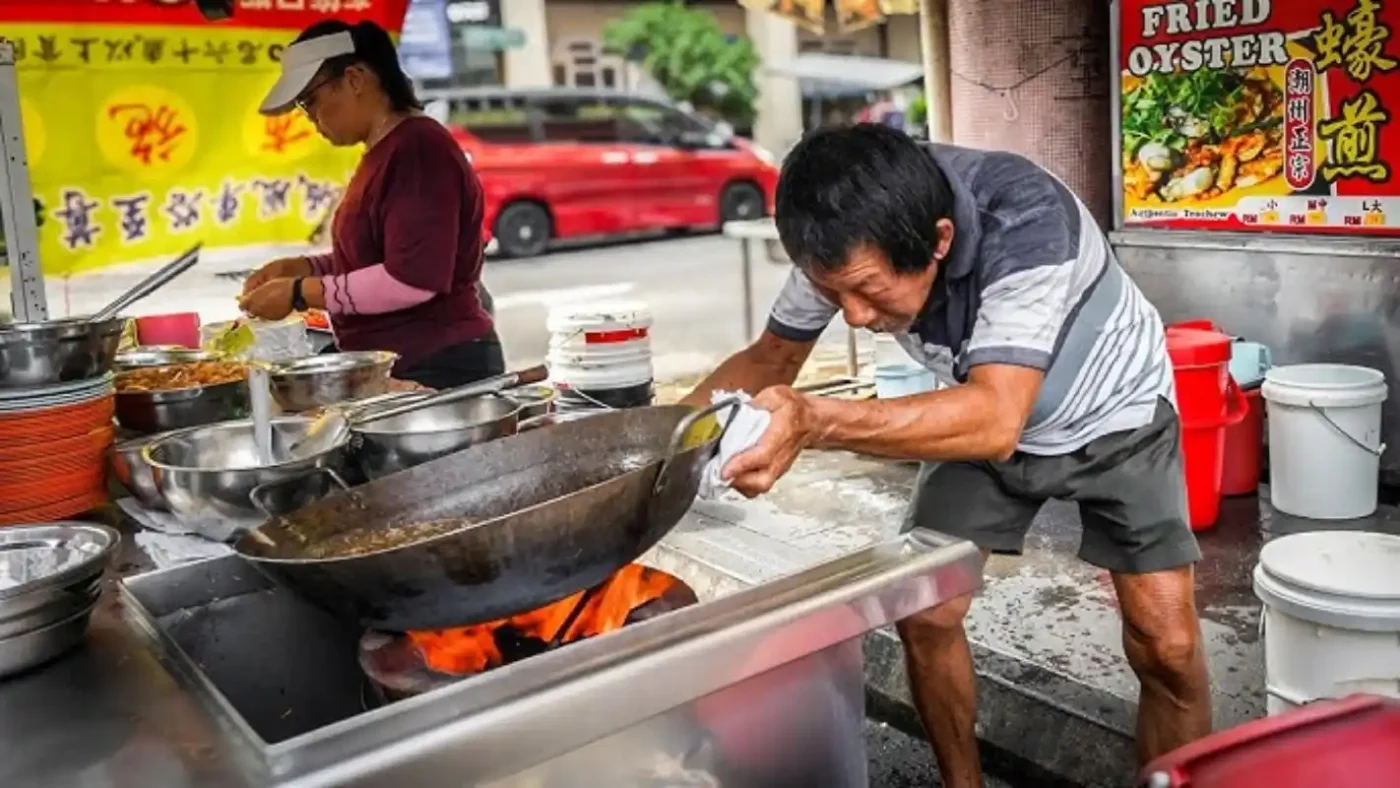In a move to curb the misuse of subsidized liquefied petroleum gas (LPG), the Malaysian government has mandated that all eateries, from high-end restaurants to humble hawker stalls, phase out household gas cylinders in favor of commercial ones. Since May 1, 2025, the new policy has stirred unease among industry players, who warn of rising costs and potential price hikes for consumers. With the cost of commercial gas cylinders nearly triple that of subsidized ones, the food and beverage sector is grappling with how to adapt without passing the burden onto customers.
New Rules, Higher Costs
As of the start of May, eateries across Malaysia have been barred from using household subsidized gas cylinders, priced at just RM26 (~US$5.50 as of May 27, 2025). Instead, they must switch to purple 14kg commercial cylinders costing RM70 (~US$14.80). The price disparity has raised alarm among restaurant owners and coffeeshop operators, who already operate on tight margins in a competitive market. Additionally, businesses using more than 42kg of LPG—equivalent to three cylinders—must now apply for a yearly permit under the Control of Supplies (Amendment) Act 2021.
The Domestic Trade and Cost of Living Ministry has launched a stringent enforcement campaign, dubbed Ops Gasak, to ensure compliance. Since May 1, ministry officers have seized goods worth RM883,000 (~US$186,500) from eateries found flouting the rules. Enforcement director-general Datuk Azman Adam emphasized the government’s resolve, stating, “We will use enforcement to ensure no one diverts subsidized goods meant for the people.”
The policy, initially planned in 2019 but delayed, aims to redirect subsidies to domestic users while addressing the RM3.4 billion (~US$718 million) annual cost of LPG subsidies to the government. Minister Datuk Armizan Mohd Ali highlighted the fiscal burden during a statement on May 23, underscoring the need for stricter controls in the commercial sector.
Industry Pushback and Price Hike Fears
While the government’s intent to protect subsidies for households is clear, the food and beverage industry has expressed significant concerns over the lack of clarity and the financial impact of the switch. Keu Kok Meng, president of the Petaling Jaya Coffeeshop Association, acknowledged the sector’s willingness to comply but stressed the need for transparency. “The government must announce what comes with the switch of gas cylinders. This is because food at coffeeshops is priced competitively low. This change will affect our costs” he told local media. He added that gas suppliers have already notified businesses to apply for permits, but the timeline and support for adaptation remain uncertain.
Keu also pointed to a survey of a noodle shop, which uses two cylinders daily to serve 70 bowls. The switch to commercial gas could increase the price per bowl by over RM1 (~US$0.21), a significant jump for budget-conscious customers. “We understand where the government is coming from, but give us time to change and adapt” he urged.
Similarly, Govindasamy Jayabalan, president of the Malaysian Indian Restaurant Owners’ Association (Primas), highlighted the steep cost increase for small restaurants. “On average, a small restaurant uses about 100 cylinders per month, so that comes to RM2,600 (~US$550), but now we will have to fork out RM7,000 (~US$1,480). So, you can see that cost will eventually translate to the price of food” he explained. Jayabalan welcomed the introduction of the 14kg commercial cylinder as a practical alternative to the unwieldy 50kg version but lamented the financial strain, especially amid rising raw material costs and the recent removal of egg subsidies. “We don’t mind the switch, but we urge the ministry and the government to hear our pleas” he added.
Primas has formally requested clarification from the ministry, advocating for a grace period to adapt rather than immediate penalties or seizures. Between May 1 and 20, the ministry recorded 74 cases of non-compliance, with seizures totaling RM883,000 (~US$186,500), signaling a firm stance that has left many in the industry feeling pressured.
Broader Economic Implications
The switch to commercial gas cylinders is not just a logistical challenge for Malaysia’s food and beverage sector; it reflects broader tensions in the country’s economic policy as the government seeks to balance fiscal responsibility with public welfare. Subsidies have long been a cornerstone of Malaysia’s cost-of-living strategy, shielding lower-income households from volatile global energy prices. However, the misuse of subsidized goods in commercial settings has strained public finances, prompting reforms like the LPG policy.
Yet, the timing of this change raises questions about its impact on inflation and consumer spending. Malaysia’s food and beverage industry, particularly small and medium enterprises like hawker stalls and family-run eateries, plays a vital role in the economy, employing thousands and serving as a cultural touchstone. A ripple effect from higher operating costs could dampen consumer confidence, especially as households already contend with rising prices for essentials. If noodle bowls and other affordable meals become pricier, as industry leaders predict, the policy may inadvertently burden the very demographic it aims to protect.
Economists note that while the government’s subsidy rationalization is fiscally sound, its execution must consider the pace of adjustment for businesses. A sudden cost increase without transitional support—such as phased implementation or temporary relief—risks alienating small business owners, many of whom lack the capital to absorb such shocks. Data from the Department of Statistics Malaysia indicates that food and beverage services contribute significantly to the nation’s GDP, underscoring the sector’s importance beyond mere numbers.
Government’s Balancing Act
For the Domestic Trade and Cost of Living Ministry, the challenge lies in enforcing compliance without stifling an industry still recovering from global economic disruptions. Ops Gasak, while effective in curbing misuse, has drawn criticism for its heavy-handed approach. Restaurant owners like those represented by Primas argue that dialogue and flexibility could achieve the same goals without the immediate threat of seizures or fines.
The government’s decision to prioritize the 14kg commercial cylinder over the larger 50kg option shows some responsiveness to practical concerns, as the smaller size is easier to handle in cramped kitchen spaces. However, without addressing the cost disparity, such measures offer limited relief. Some industry observers suggest that a tiered pricing system or temporary subsidies for small businesses could bridge the gap during the transition, though no such plans have been announced.
Public sentiment, as gauged through local media and online discussions, reflects a mix of understanding and frustration. Many Malaysians support the idea of redirecting subsidies to households but question why the burden of reform seems to fall disproportionately on small businesses. The government’s communication strategy will be key in managing these perceptions, particularly if food prices rise as predicted.
Looking Ahead
As Malaysia’s eateries navigate this costly transition, the long-term effects of the gas cylinder policy remain uncertain. Will the government offer concessions to ease the burden on small businesses, or will enforcement continue to dominate the approach? For now, restaurant owners and hawker stall operators are left to weigh their options, balancing compliance with the risk of alienating customers through price hikes.
The debate over LPG subsidies is emblematic of broader challenges in Malaysia’s economic landscape, where the push for fiscal discipline often clashes with the realities of everyday livelihoods. As the ministry continues its crackdown, the voices of industry players like Keu Kok Meng and Govindasamy Jayabalan serve as a reminder that policy changes, however well-intentioned, must account for the human cost. For Malaysians, the price of a simple meal may soon reflect far more than the ingredients on the plate.















